John Shanks offers a tour of his epic gear collection and reflects on a career working with the A-list of pop and rock
The Bon Jovi and Melissa Etheridge guitarist and Grammy Award-winning producer talks collaborating with studio legends, opening for Prince and, oh, y'know, some of the nicest guitars you will see all day...

John Shanks is in his Los Angeles studio, and behind him the walls are adorned with rows of gold and platinum records that bear his name. As a producer he has consistently been making hit records for decades, emboldened by a finely developed curiosity for sound that started when he was a kid.
He recalls listening to his parents’ Beatles records: “I remember finding the Balance knob and realising, almost suddenly, the drums were on one side, or the harmonies were on the other side, listening to parts more individually that made up the whole.”
Growing up in New York City it was hard to escape the barrage of influences that were all around. “There was always music playing out of cars, taxis, the park,” he says. “Then there would be my parents’ parties, these elaborate parties. You’re hearing Cole Porter and Gershwin and classical music.”
However, it was the guitar that really drew him into the world of music. “I was playing tennis rackets and anything when I was in first grade and saw the attention that I got pretending to be John Lennon or McCartney.” This eventually led to Shanks picking up his sister’s acoustic, which sat imposingly in a back room of the house.
At what point did that acoustic guitar become an electric?
“I had this acoustic probably from 10 to about 13 and then I wanted a Strat. My mom was great. She was like, ‘Save up your money and then wherever you get to, I’ll match you.’ She was awesome. So I worked summer jobs. I did whatever – walking dogs, working at a pharmacy, delivering medicine to old ladies. I went to this camp and I worked in the kitchen, scrubbing pots and cleaning tables and mopping floors. But I had this guitar in my head, this shining light on the hill.
“I remember, I think it was eighth grade, seventh grade, somewhere in there. I got to about 150, 160 bucks, and a new Stratocaster in ’75 was $237 with the case, I still remember the price. We took a cab there. We made it right before closing and it was hanging on the wall. Then I proceeded to strip it.
All the latest guitar news, interviews, lessons, reviews, deals and more, direct to your inbox!
“Four days later, I had sandpaper and I was taking all the goopy 70s lacquer off my Strat. I had that Strat until I was 26 and it got stolen. I eventually put the humbucker in it. I put a Floyd Rose on it at some point. But that guitar got me here talking to you.”
Who were some of your early influences?
“I wanted to play guitar like Jimmy Page or Beck or Peter Frampton or Gilmour. It was that great time of guitar players and the English blues guys and giving back to us what we had forsaken. But also, we had a lot of blues records in our house, so I understood the three Kings.
“It was Albert first and then BB and then Freddie, and you start to see the connection. But I think, for me, AM radio really taught me about songwriting and songs back when I was a kid. It was Sly And The Family Stone to Elton John, or John Lennon to Stevie Wonder.”
At what point did you start playing with other people?
“I think, initially, it was some friends from school. In New York, there are these rehearsal rooms and you would all chip in $10 or $15, anything you could get your hands on. Then we’d get a couple of hours in these rooms and you started learning how to play, and not just [playing] to records. There’s a difference between playing to a record and moving the needle and trying to learn the lick, and then playing with other musicians…
“But let me backtrack a moment. I got a four-track recorder, a Tascam 144 – and that changed my life in a sense because I learned how to layer parts. I could double this, I could pan it. I started to learn how to build a chorus. I started to learn counterpoint just on my own.
“Then somehow I started playing on really, really early hip-hop sessions in New York. A guy named D.ST, we did Rockit with Herbie Hancock. I think I played on the Afrika Bambaataa record, maybe a couple of powerchords. You show up with your guitar and a Rockman and you were good to go. That was the start. I didn’t really know what I was doing. Then when I was 16, my family moved to California and it was in my junior year of high school and that’s when my whole life was just trying to get into a band.
We opened for Prince. It was crazy... Not that I’m a huge funk guitar player, but it really taught me how to play in a band and sit in a pocket
“In high school I met this singer and she was like, ‘Oh, you should play with my sister. She’s an artist,’ and turned out it was Teena Marie who was on Motown. I auditioned for her band and got the gig.
“We opened for Prince. It was crazy. It was like that period when Controversy first came out. Not that I’m a huge funk guitar player, but it really taught me how to play in a band and sit in a pocket and understand that aspect of playing.
“But I was still a kid. You think it’s about the money and it wasn’t. It was just really about the experience and getting to play with really great musicians. Each time I thought, ‘This is it. This could be the break,’ and they’re not. It’s just part of the journey. It’s just part of your path.”
What was the path that took you from being a session guitarist around town to a Grammy Award-winning record producer?
“I was playing in this band, it was called The Uninvited. We were playing clubs around town and this young gal kept coming to see us play and I heard she was putting together a band.
“She came up to me one night after we played a show and she’s like, ‘I’m playing The Roxy tomorrow night, I think you should come see me.’ And I’m like, ‘Oh yeah, okay.’ It was Melissa Etheridge and this is her early, early days and she had just moved to LA, so I went to see her play.
“I was so blown away by her stage presence and her songwriting and her strength as a performer and as a writer. I was like, ‘Well, so much for my dreams.’ My dream in that moment was like, ‘I want to stand next to her. I want to be in her band.’ And that was probably a really smart thought because our lives have intertwined since the 80s and she’s been a force for me forever.
“I started playing as just her guitar player for many years and I got the opportunity to tour the world with her – starting off with her in a van and then a shitty bus. Then we got a better bus, and then I left the band for a little bit and grew up a bit, came back to LA and got my shit together and started working again, and then started doing more sessions.
“Then I was playing somewhere and I bumped into Melissa and she asked me to come back and join the band again. She’s like, ‘I’ve been through all these guitar players… It’s time for you to come home.’ That was the beginning of her ascension.
I was very cognisant of never crossing that boundary with Melissa. I never went to her and said, ‘I write songs, too,’ or ‘You should hear my demos'
“I was still just the guitar player, but it put me in a room with Pino Palladino and Hugh Pageant, who was the producer, and Kenny Aronoff. When I had the opportunity to be in a room with not just musician heroes or peers but producers that I respected, you start to see what qualities they have that I admire, and you go, ‘Well, this guy’s so good with singers, the way he treats them, the way he gets the best out of them, how he pushes them, how he really challenges the band as far as tempo, arrangement, getting the best version of the song down.’
“That was massive for me because if you’re there and you’re just another schlub on the bus, so to speak, or a cog in the wheel, your job as a player is to make the song sound as great as it can be.

“I was very cognisant of never crossing that boundary with Melissa. I never went to her and said, ‘I write songs, too,’ or ‘You should hear my demos.’ So when we were working on a record and the person who was producing the record wasn’t going well, Pino Palladino came up to me and he goes, ‘Listen, man. By the end of this day you’re going to be producing this record, so get ready.’ And I was like, ‘There is no way I’m going to produce this record.’
“He’s like, ‘She loves you, it’s your time. You’re ready. You guys work well together and I’ve been in this position. I’m just further down the road than you and I’ve seen this happen. And you would be the right guy.’ And that opportunity happened.
“It wasn’t because I imposed my ego on her; it was a collaborative journey we went on. And that record, I made sure I wasn’t the only guitar player. I brought in Greg Leisz to play what he does and he’s my friend. I brought in Jon Brion, a guitar player I really loved.
“And we had all these amazing drummers – from Abe [Laboriel Jr] to [Jim] Keltner to [Steve] Ferrone, to Matt Chamberlain, to Kenny Aronoff to Vinny [Colaiuta]. It was amazing. And that record, [Breakdown, 1999], got nominated for a number of Grammys. [Angels Would Fall] was a song that she and I had written together that was nominated for Best Rock Song.
“All of a sudden, because of this record, it was like I got my credentials stamped – to them, to the A&R community, to the managers, to the record companies. I was the same guy, but to them I guess I was worthy enough. And literally since that day, I’ve never stopped working. That was in the 90s.”
You’ve worked with Van Halen, Sheryl Crow, The Doobie Brothers, Miley Cyrus, The Goo Goo Dolls… But it was Bon Jovi that saw you come full circle and get back on the road as a member of the touring band. How did this come about?
“Well, I didn’t tour from basically 2000 till 2016. I just didn’t want to go on the road. I was grateful to be writing and producing records, and I thought that’s my life. I have two boys and it was important for me to be at home. But I was always producing and writing with Jon and Richie on these Bon Jovi records – we’ve done eight or nine together.
“Then when Richie left the band, I played more guitar on This House Is Not For Sale. At the end of doing that record Jon and I, we’re really close, he said, ‘Listen, do you want to do the promo tour with us? You played a lot of these guitars, it’d be really good for you and Phil to work together. Can you do that?’ It was not, ‘Can you physically literally do it?’, but can you be Ronnie Wood? You’re not Keith Richards, you’re not Richie. Can you be the other guy?
It’s the joke in the band. It’s like, ‘Oh it’s Phil X and the other guy.’ I’m the other guy
“It’s the joke in the band. It’s like, ‘Oh it’s Phil X and the other guy.’ I’m the other guy. And I was like, ‘Yeah, I can…’ I probably wouldn’t have been able to do it when I was 20 or 23. I was really cocky and my ego wouldn’t have let me do it. But I think as one gets older, hopefully humility kicks in and you have more maturity, and I was very grateful.
“So we did the promo tour and at the end of it he said to me, ‘It’s basically yours if you want it.’ I actually called a couple friends of mine, artists, and I said, ‘Is this a bad thing to do for my career? Whatever Grammy-winning blah, blah, blah, is this dumb?’ And it’s funny, independently they both said to me, ‘You’ve been staring at a computer screen for 20 years, and I think it’s time.’ I realise it’s a privilege, that I’m ready to go back and I want to play with the band.”
John Shanks: Gear tour
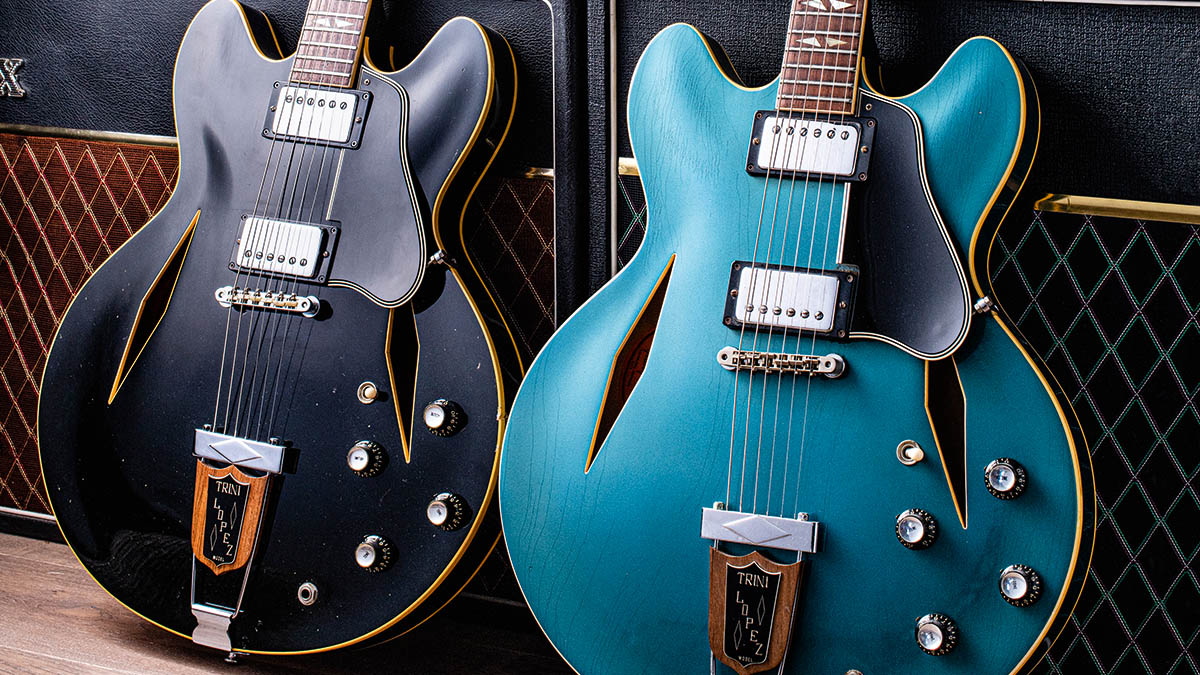
GIBSON TRINI LOPEZ
“Believe it or not, that [blue] Trini Lopez I found on eBay in the early days of eBay, I saved it as a search. It was a dream guitar – ‘Pelham Blue, Trini Lopez’ – way before Dave Grohl got into them.
“I thought the headstock was really unique because it’s more of a Firebird headstock, and then you have this crazy colour, and the Patent Sticker pickups, which I’m a big fan of – they’re super shiny and bell-like and cut through in a really musical way. So I saved it as a search and it turned out that the guy that sold it to me had had the guitar since he bought it.
“The black one’s pretty rare, too. I know Gibson has just reissued a black Trini Lopez [Historic Reissue Standard in 2020] – and Phil X has one that he plays live. But this one’s from the 60s.”
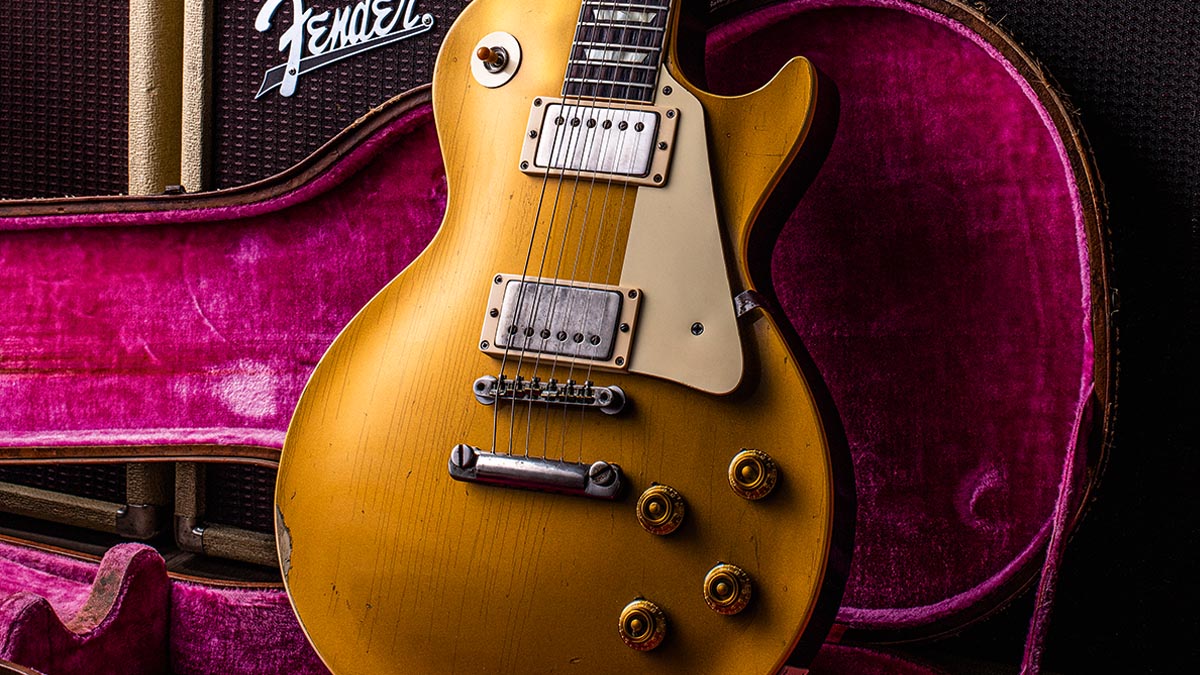
1958 GOLDTOP GIBSON LES PAUL
“That Goldtop, believe it or not, that might be the best guitar I own – in the sense that it’s perfectly balanced, the weight and the neck, the neck is a perfect size. It’s not super, super chunky like some ’58s. You have to understand that halfway through ’58 is when they went to the sunburst, so I’m sure if you pull the gold off that thing, there might be flame underneath, who knows.
“But there’s something about that era, ’57 and ’58. When the gold fades it just has such a beautiful lustre and they’re beautiful looking. It’s perfectly balanced where the neck pickup is weaker than the bridge pickup. You go to the neck pickup and it’s really bell-like and chime-y. It has that classic kind of Dickey Betts, Allman Brothers-y thing, which is a lot of tone, a lot of cut and character, not muddy. And when you roll down, it gets really clean.
“I would love to take that guitar on the road, but I won’t do it. I’ve often thought about it because I play this game where I think, ‘Oh I should sell some guitars. I’ve got to sell guitars. Which ones would go first?’ And I’ll tell you that Goldtop would be one of the last.”

ZEMAITIS CUSTOM
“That guitar is a Zemaitis, made in England by Tony Zemaitis. Guys like Ronnie Wood played one. I think Dave Edmunds played one, but then I saw that James Honeyman-Scott, who was the lead guitar player in The Pretenders, played one – and I’m a huge Pretenders fan.
“I love Chrissie Hynde and I love James Honeyman-Scott’s guitar playing… huge fan. I was lucky enough to meet Peggy Sue Honeyman-Scott, who was married to James.”



“At the time she was selling some of his guitars as she was putting a kid through college, so I was a caretaker for about four of his guitars for a couple years and had the privilege of bringing them back to life, cleaning them up, getting tech to properly work on them. They were pretty beat up. Then she sold some of them through an auction. This was the last one and I just couldn’t let that one go.”
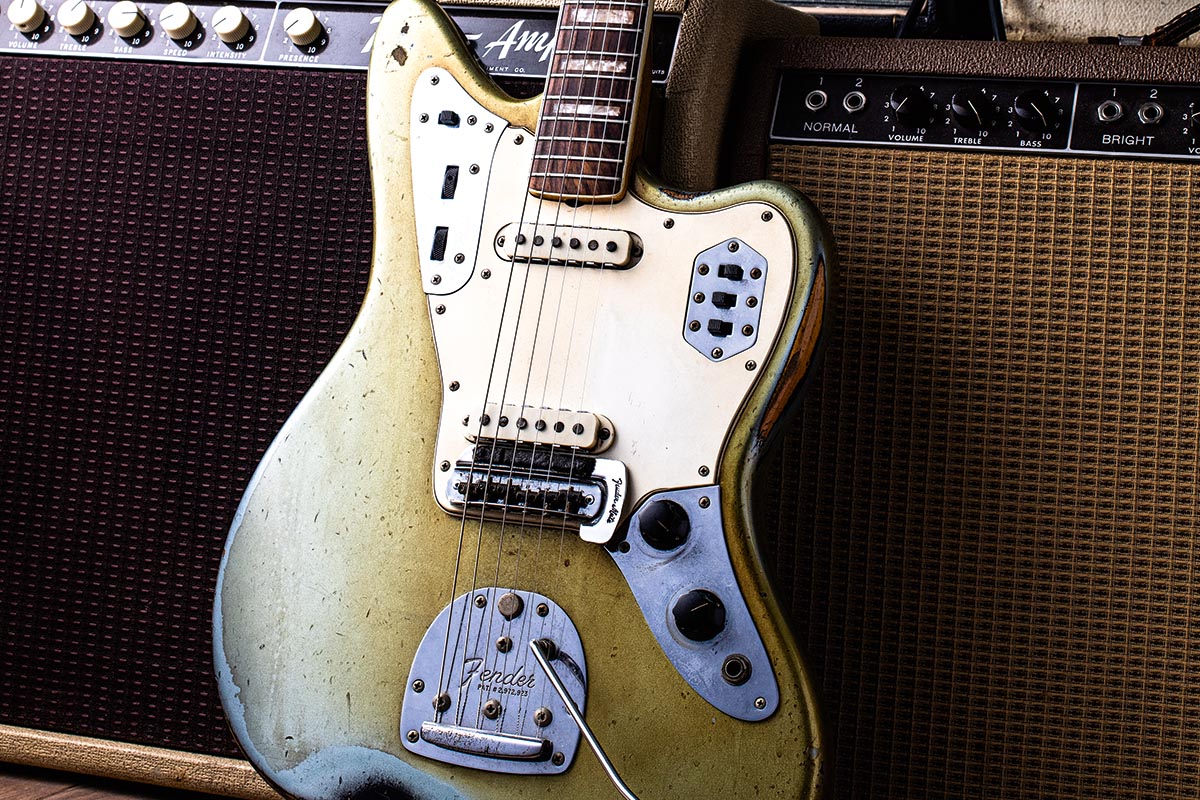
1963 FENDER JAGUAR
“That’s a ’63 Jaguar. I think it might have been Firemist Silver – it’s a silver colour and it’s faded into a green. I don’t know if I’d use it on the road, but I certainly use it in the studio. It’s a great guitar. They’re very unique.”

1952 FENDER ESQUIRE
“I took the body for that neck and then had this other ’52 and I just swapped it – and that’s the one I play on the road. It’s got the chunkier neck, but I made them both into Teles, even though they say Esquire. I was in New York and got the privilege of checking out Keith Richards’ guitar one day, and a lot of his Teles are Esquires.
“They were always like, ‘Man, you can’t beat that pickup,’ because it’s a little tougher. It’s a little hotter because it was the only pickup – they wound them a little tougher. I acquired those maybe in the early 2000s.
“Obviously, the prices of these things have gone through the roof, but at the time this guitar was so beat up, I don’t think I paid that much for it. But in order to make the ultimate one, I just combined the body and the necks, and that’s what I play live with Bon Jovi. It’s very Stones-y. It kind of has that thing.”

1964 FENDER STRATOCASTER
“That’s a ’64 Shoreline Gold Stratocaster. I bought it for $3,000 from Albert [Molinaro] from Guitars R Us, which used to be on Sunset Boulevard across from Guitar Center. He was very kind to me because at the time I couldn’t just give him three grand. He literally let me pay him 200 bucks a week for months.
“I played that guitar at Woodstock ’94. That’s one of the guitars I won’t sell; it means so much to me. Supposedly it belonged to Brian Setzer at one time, and then I think it went to one of the gals in The Go-Go’s, and then it went to me. That’s what I heard… you never know when you hear these stories.”
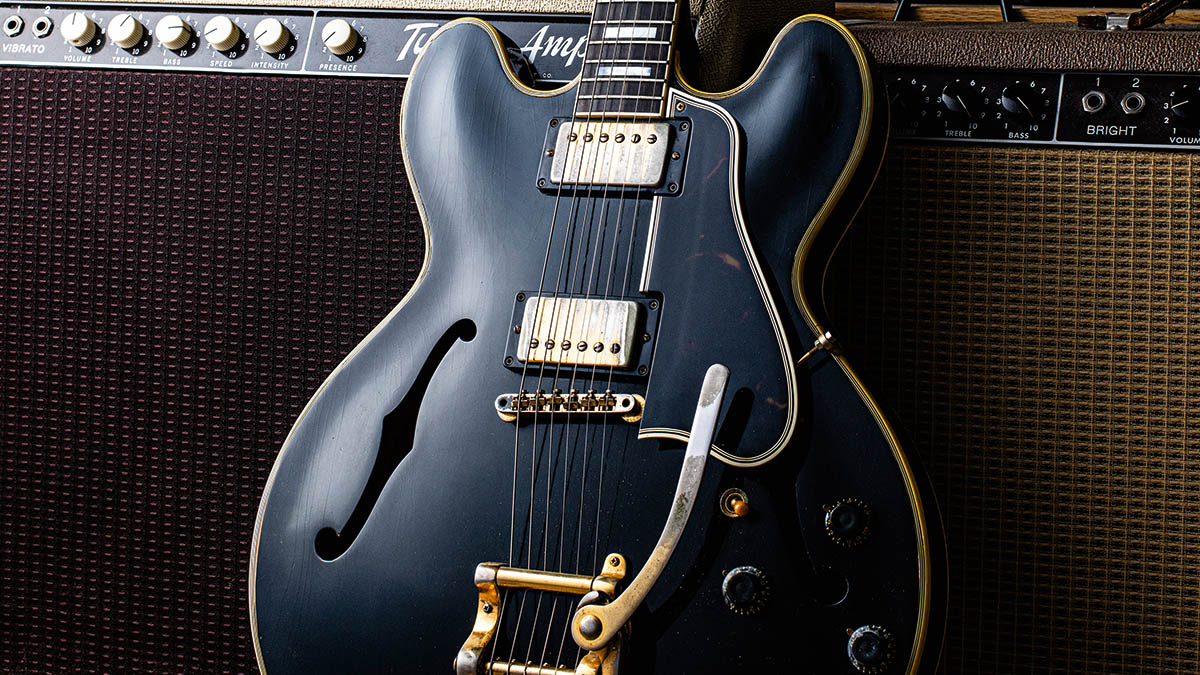
1960 GIBSON ES-335
“These Gibsons are super rare. It’s an ES-355 from 1960. From what I’ve been told, it’s the only 355 from 1960. One of one. Really rare. This guitar is a ‘60 gold parts mono’, meaning it doesn’t have the tone switches. I’ve been told by Joe Bonamassa that if I sell it, I have to sell it to him.”
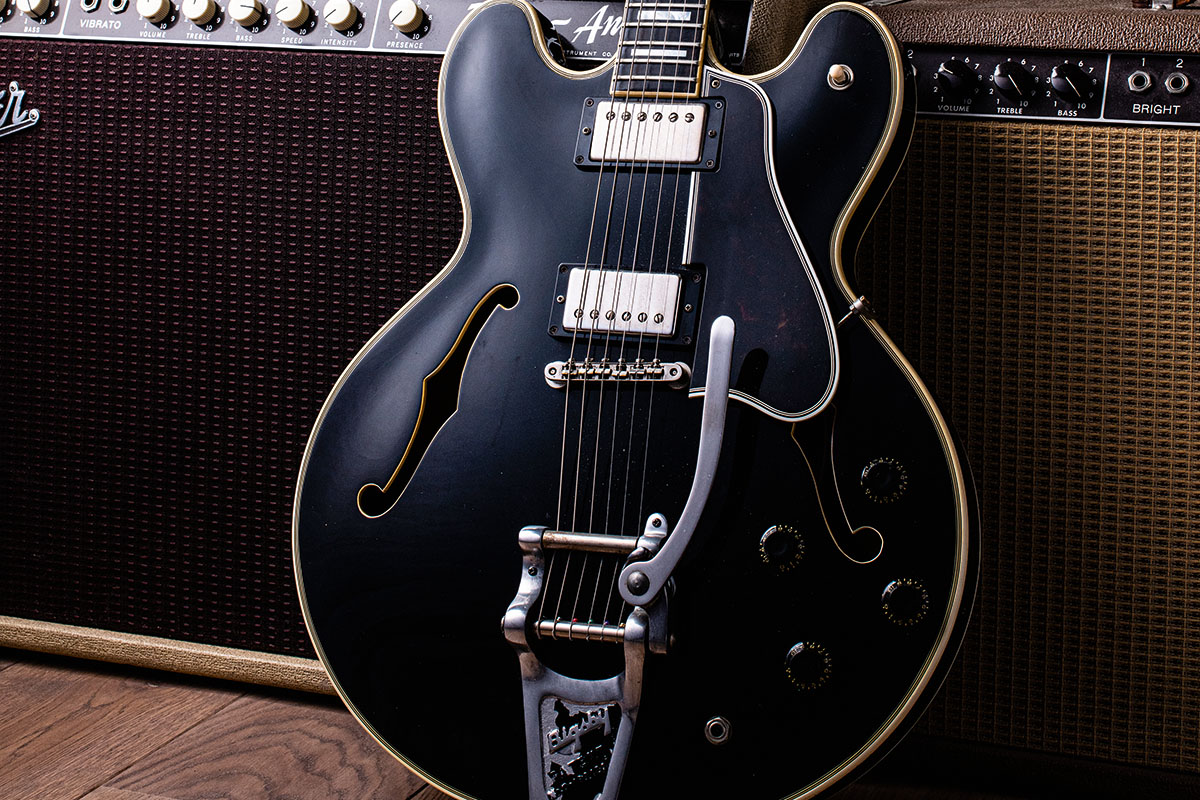
1960 GIBSON ES-335
“This belonged to Johnny Marr from The Smiths, and there’s pictures of him all over the internet playing it. What’s interesting about the Johnny Marr one is he changed the pickups and put in Seymour Duncan pickups that he can split the coils, so he can get that real kind of jangly, single-coil Smith’s thing, or you can make it a humbucker.
“So when you pull up on the volume knobs, they split the coils on the pickups. That was a guitar I said yes to without even playing it because I knew the guitar and what it was.”
VEMURAM SHANKS ODS-1
“This is my favourite effects pedal. It’s an overdrive pedal by a Japanese company that makes boutique guitar effects. I designed a few pedals with them [a range of fuzz boxes], but the last one we did was this overdrive pedal. It took us two and a half years to develop. It’s not a super gainy pedal; it has a lot of transparency and a lot of clarity.
“That Pedal Show reviewed it and they gave it the best review. It was like I wrote the review! So everyone go on YouTube and just watch their review of that pedal. I sat there with my mouth open. They were so kind – I’m a fan of that show. My other favourite guitar pedal is an [Electro-Harmonix] Deluxe Memory Man.”

1960s GIBSON SG
“There’s something about that colour green for me when it fades. I mean, it’s blue, but when it fades it gets greener. The slight amber of the lacquer gets yellower, which therefore makes the paint look green. It has a Vibrola, I think they are called. Everyone thinks Vibrolas don’t really stay in tune. But if you use them in a subtle way, they do.”
Robin Davey is is an English-born, LA-based musician, record producer, musical director and videographer. Robin formed UK blues rock band The Hoax, who were signed to East West records in the mid-90s. Other bands include The Davey Brothers, The Bastard Fairies, Well Hung Heart and blues rockers Beau Gris Gris & the Apocalypse, who also feature his partner Greta Valenti on vocals. The two run a video production house, Growvision, and produce our Pedalpocalypse series.
